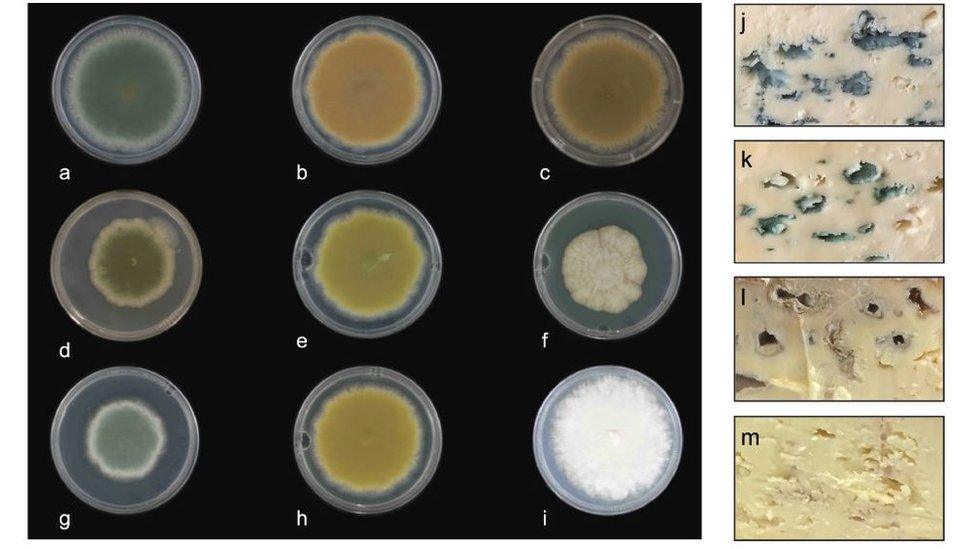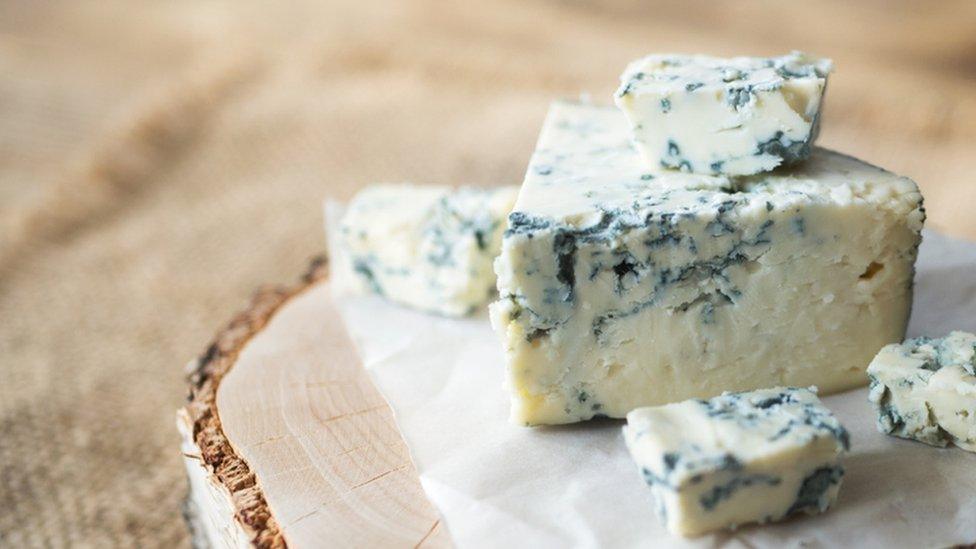Scientists create new colours of 'blue cheese'
- Published
- comments

Scientists were able to come up with a variety of new cheese colours
Would you eat pink cheese? Or how about trying one that's green?
It might sound a little strange, but those are some of the colours that could be produced in the future.
That's because scientists have identified the way the blue pigment in some cheeses is produced.
They say the discovery could open up a variety of new colours of the savoury snack.
Do you like cheese? What do you think of this discovery? Would you be tempted to try a multicoloured cheese? Let us know in the comments below.
How did scientists create the new cheese colours?

The colour of blue cheese, such as this French doblu, is produced by a fungus
There are many varieties of blue cheese that are produced around the world - including Stilton, Roquefort and Gorgonzola.
Although they might look and taste different, they are all made using the same fungus - Penicillium Roqueforti.
The unique flavour and blue-green colour come from the blue-pigmented spores formed as the fungus grows through the cheese.
However, experts at the University of Nottingham say they have discovered how the blue pigment is produced.
Scientists found that it actually starts off as a white colour, which progressively becomes yellow-green first, then red-brown-pink, dark brown, light blue - before finally reaching its final dark blue-green colour.
As a result, researchers say it is possible to stop the process along the way, resulting in a variety of new colours.
Once the team produced the cheese with the new colour strains, they then used scientific equipment to see what the new flavour might be like.
Dr Paul Dyer from the University of Nottingham, who led the research, said: "We found that the taste was very similar to the original blue strains from which they were derived," adding that there were slight differences in flavour "but not very much".
